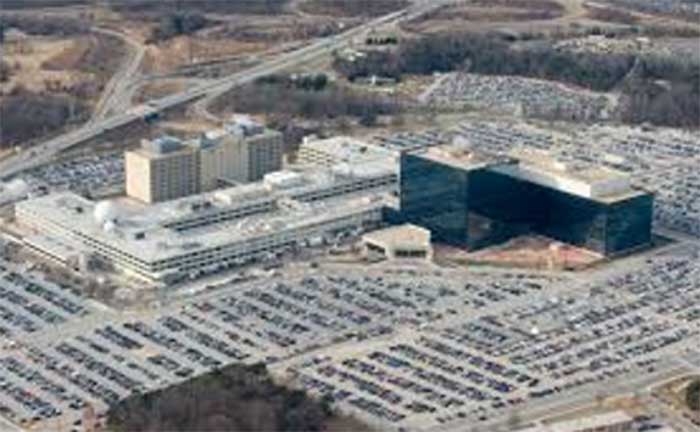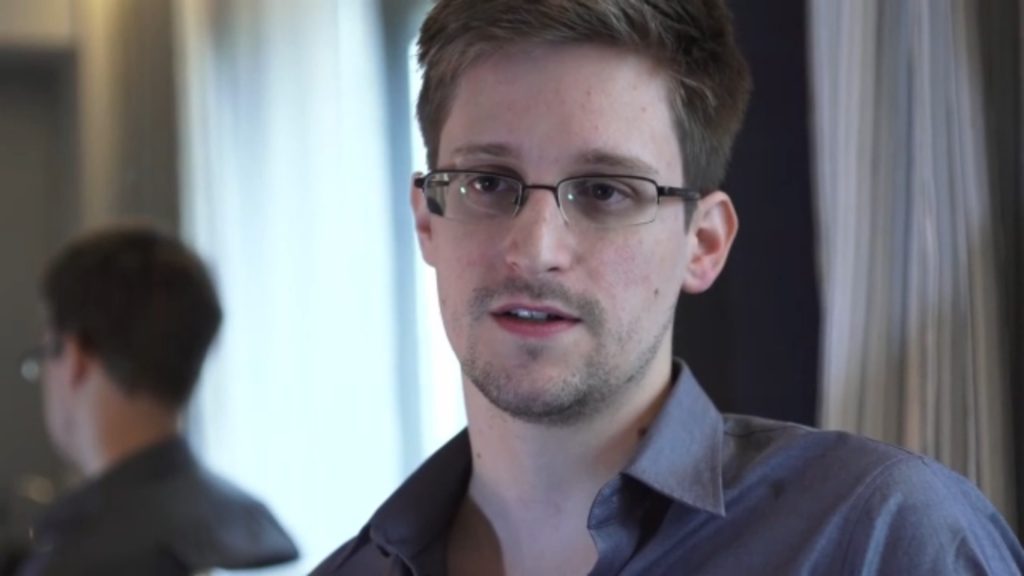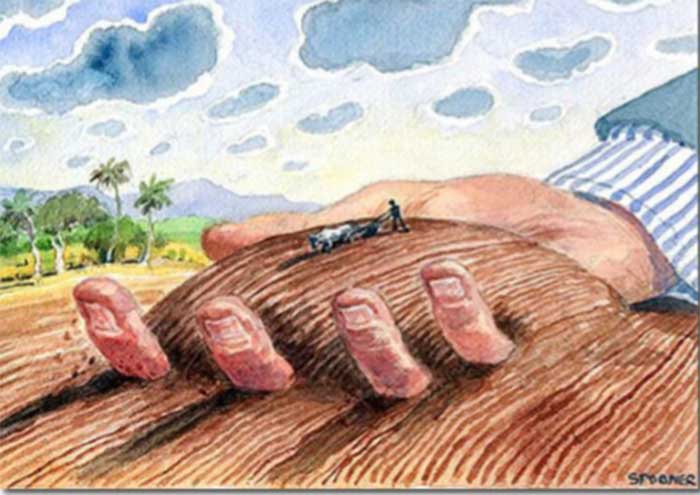John Scales Avery
Misuse of Information Technology
The role of the media
Throughout history, art was commissioned by rulers to communicate, and exaggerate, their power, glory, absolute rightness etc, to the populace. The pyramids gave visual support to the power of the Pharaoh; portraits of rulers are a traditional form of propaganda supporting monarchies; and palaces were built as symbols of power. Modern powerholders are also aware of the importance of propaganda. Thus the media are a battleground where reformers struggle for attention, but are defeated with great regularity by the wealth and power of the establishment. This is a tragedy because today there is an urgent need to make public opinion aware of the serious problems facing civilization, and the steps that are needed to solve these problems. The mass media could potentially be a great force for public education, but often their role is not only unhelpful – it is negative. It is certainly possible to find a few television programs and newspaper articles that present the facts about climate change in a realistic way. For example The Guardian gives outstanding climate change coverage. However, the mass media could do very much more. One has to conclude that the media are neglecting their great responsibilities at a time of acute crisis for human civilization and the biosphere. The same can be said of our educational systems at both both the primary and advanced levels. We urgently need much more public education about the severe dangers that we face today.
The mass media have failed us
The predicament of humanity today has been called “a race between education and catastrophe”: How do the media fulfil this life-or-death responsibility? Do they give us insight? No, they give us pop music. Do they give us an understanding of the sweep of evolution and history? No, they give us sport. Do they give us an understanding of the ecological catastrophes that threaten our planet because of unrestricted growth of population and industries? No, they give us sit-coms and soap operas. Do they give us unbiased news? No, they give us news that has been edited to conform with the interests of powerful lobbys. Do they present us with the urgent need to leave fossil fuels in the ground? No, they do not, because this would offend the powerholders. Do they tell of the danger of passing tipping points after which human efforts to prevent catastrophic climate change will be useless? No, they give us programs about gardening and making food. A consumer who subscribes to the “package” of broadcasts sold by a cable company can often search through all 95 channels without finding a single program that offers insight into the various problems that are facing the world today. What the viewer finds instead is a mixture of pro-establishment propaganda and entertainment. Meanwhile the neglected global problems are becoming progressively more severe. In general, the mass media behave as though their role is to prevent the peoples of the world from joining hands and working to change the world and to save it from thermonuclear war, environmental catastrophes and threatened global famine. The television viewer sits slumped in a chair, passive, isolated, disempowered and stupefied. The future of the world hangs in the balance, the fate of children and grandchildren hangs in the balance, but the television viewer feels no impulse to work actively to change the world or to save it. The Roman emperors gave their people bread and circuses to numb them into political inactivity. The modern mass media seem to be playing a similar role.
Alternative media
Luckily, the mass media do not have a complete monopoly on public information. With a little effort, citizens who are concerned about the future can find alternative media. These include a large number of independent on-line news services that are supported by subscriber donations rather than by corporate sponsors. YouTube videos also represent an extremely important source of public information. Countercurrents is an outstanding example of an independent Internet news service, and the vitally important work deserves our wholehearted support.
Perpetual war
The military-industrial complex needs enemies. Without them it would wither. Thus at the end of the Second World War, this vast power complex was faced with a crisis, but it was saved by the discovery of a new enemy: communism. However, at the end of the Cold War there was another terrible crisis for the military establishment, the arms manufacturers and their supporters in research, government and the mass media. People spoke of the “peace dividend”, i.e., constructive use of the trillion dollars that the world wastes each year on armaments. However, just in time, the militaryindustrial complex was saved from the nightmare of the “peace dividend” by the September 11 attacks on New York and Washington. No matter that the attacks were crimes committed by individuals rather than acts of war, crimes against which police action rather than military action would have been appropriate. The Bush Administration (and CNN, Fox, etc.) quickly proclaimed that a state of war existed, and that the rules of war were in effect.
The Cold War was replaced with the “War on Terrorism”. To a large extent, this over-reaction to the events of 9/11/2001 can be interpreted in terms of the needs of the military-industrial complex against which Eisenhower had warned. Without a state of war and without enemies, this vast conglomerate of organizations and pressure groups would have languished. If the aim of the “War on Terror” had been to rid the world of the threat of terrorism, acts like illegal assassination using drones would have been counterproductive, since they create many more terrorists than they destroy. But since the real aim is to produce a state of perpetual war, thus increasing the profits of the military-industrial complex, such methods are the best imaginable. Urinating on Afghan corpses or burning the Koran or murderous night-time raids on civilian homes also help to promote the real goal: perpetual war.
Even the events that initiated the “War on Terror”, seem to have been made worse than they otherwise might have been, in order to give a better excuse for invading Iraq, attacking Afghanistan, and attacking civil liberties. There is evidence that a number of highly placed officials in the US government knew as early as April 2001 that the World Trade Center might soon be attacked. The testimony given by CIA insider Susan Lindauer is very explicit about this point. There is also evidence that charges of thermite were placed on the steel structures of several buildings, to melt the steel and thus ensure collapse. Molten steel and traces of thermite were found in the ruins before these were sealed off from public scrutiny by the FBI. The collapse of Building 7 (which was not hit by any aircraft) is particularly suspicious. Larry Silverstein, the leaseholder of the World Trade Center, said shortly afterwards in a PBS interview: “I remember getting a call from the fire department commander telling me that they were not sure that they would be able to contain the fire…” (and he said that) “I think that the smartest thing to do is to pull it.” The phrase “pull it” is one used to speak of controlled demolition, and the subsequent free-falling collapse of Building had all the earmarks of this process. Architects and Engineers for 9/11 Truth, an organization of more than a thousand accredited architects and engineers, have produced a two hour documentary film pointing to evidence that the collapse of the World Trade Center buildings was due to explosive charges of thermite rather than to fire or the impact of airplanes 1 For those who belong to the military-industrial complex, perpetual war is a blessing, but for the majority of the people of the world it is a curse. Since we who oppose war are the vast majority, can we not make our wills felt?
The deep state
It is obvious, almost by definition, that governmental secrecy and democracy are incompatible. In a true democracy, the citizens need to know what is going on, and their well-informed votes must control the actions of their government. The revelations of Edward Snowden and others have shown that the number of people involved in secret operations of the United States government is now as large as the entire population of Norway: roughly 5 million. The influence of this dark side of government has become so great that no president is able to resist it. In a recent article, John Chuckman remarked that “The CIA is now so firmly entrenched and so immensely well financed (much of it off the books, including everything from secret budget items to the peddling of drugs and weapons) that it is all but impossible for a president to oppose it the way Kennedy did. Obama, who has proved himself to be a fairly weak character from the start, certainly has given the CIA anything it wants. The dirty business of ISIS in Syria and Iraq is one project. The coup in Ukraine is another. The pushing of NATO’s face right against Russia’s borders is another. Several attempted coups in Venezuela are still more. And the creation of a drone air force for extra-judicial killings in half a dozen countries is yet another. They don’t resemble projects we would expect from a smileyfaced intelligent man who sometimes wore sandals and refused to wear a flag pin on his lapel during his first election campaign.” 2 Of course the United States government is by no means alone in practicing excessive secrecy.

Figure 1: The data of major Internet corporations was stolen without their knowledge or consent.
Secret land purchases in Africa
According to a report released by the Oakland Institute, in 2009 alone, hedge funds bought or leased nearly 60 million hectares of land in Africa, an area the size of France. 3 As populations increase, and as water becomes scarce, China, and other countries, such as Saudi Arabia are also buying enormous tracts of agricultural land, not only in Africa, but also in other countries. 4 These land purchases are very often kept secret from the local populations by corrupt governments.
Secrecy, democracy and nuclear weapons
Nuclear weapons were developed in secret. The decision to use them on the civilian populations of Hiroshima and Nagasaki in an already-defeated Japan was made in secret. Since 1945, secrecy has surrounded all aspects of nuclear weapons, and for this reason it is clear that they are essentially undemocratic. Nuclear disarmament has been one of the core aspirations of the international community since the first use of nuclear weapons in 1945. A nuclear war, even a limited one, would have global humanitarian and environmental consequences, and thus it is a responsibility of all governments, including those of non-nuclear countries, to protect their citizens and engage in processes leading to a world without nuclear weapons.

Figure 2: These huge buildings in Fort Meade, Maryland, are the main headquarters of NSA.

Figure 3: Angela Merkel’s telephone was bugged by NSA. In a cartoon depicting the incident, she says “Tell the Americans to stop listening to our telephone conversations”. Her aide replies, “You just did”.

Figure 4: The revelations of Edward Snowden and others have shown that the number of people involved in secret operations of the United States government is now as large as the entire population of Norway: roughly 5 million.

Figure 5: According to a report released by the Oakland Institute, in 2009 alone, hedge funds bought or leased nearly 60 million hectares of land in Africa, an area the size of France. These land purchases are very often kept secret from the local populations by corrupt governments.
Freedom from fear
In order to justify secrecy, enormous dark branches of government and mass illegal spying, governments say: “We are protecting you from terrorism”. But terrorism is not a real threat, since our chances of dying from a terrorist attack are vanishingly small compared to (for example) preventable disease or an automobile accident. If we are ever to reclaim our democracy, we must free ourselves from fear.
2 If properly used, information technology can unite the world
We stand on each other’s shoulders
Cultural evolution depends on the non-genetic storage, transmission, diffusion and utilization of information. The development of human speech, the invention of writing, the development of paper and printing, and finally, in modern times, mass media, computers and the Internet: all these have been crucial steps in society’s explosive accumulation of information and knowledge. Human cultural evolution proceeds at a constantly-accelerating speed, so great in fact that it threatens to shake society to pieces. In many respects, our cultural evolution can be regarded as an enormous success. However, at the start of the 21st century, most thoughtful observers agree that civilization is entering a period of crisis. As all curves move exponentially upward, population, production, consumption, rates of scientific discovery, and so on, one can observe signs of increasing environmental stress, while the continued existence and spread of nuclear weapons threaten civilization with destruction. Thus, while the explosive growth of knowledge has brought many benefits, the problem of achieving a stable, peaceful and sustainable world remains serious, challenging and unsolved. Our modern civilization has been built up by means of a worldwide exchange of ideas and inventions. It is built on the achievements of many ancient cultures. China, Japan, India, Mesopotamia, Egypt, Greece, the Islamic world, Christian Europe, and the Jewish intellectual traditions, all have contributed. Potatoes, corn, squash, vanilla, chocolate, chili peppers, and quinine are gifts from the American Indians.
The sharing of scientific and technological knowledge is essential to modern civilization. The great power of science is derived from an enormous concentration of attention and resources on the understanding of a tiny fragment of nature. It would make no sense to proceed in this way if knowledge were not permanent, and if it were not shared by the entire world. Science is not competitive. It is cooperative. It is a great monument built by many thousands of hands, each adding a stone to the cairn. This is true not only of scientific knowledge but also of every aspect of our culture, history, art and literature, as well as the skills that produce everyday objects upon which our lives depend. Civilization is cooperative. It is not competitive. Our cultural heritage is not only immensely valuable; it is also so great that no individual comprehends all of it. We are all specialists, who understand only a tiny fragment of the enormous edifice. No scientist understands all of science. Perhaps Leonardo da Vinci could come close in his day, but today it is impossible. Nor do the vast majority people who use cell phones, personal computers and television sets every day understand in detail how they work. Our health is preserved by medicines, which are made by processes that most of us do not understand, and we travel to work in automobiles and buses that we would be completely unable to construct.
The fragility of modern society
As our civilization has become more and more complex, it has become increasingly vulnerable to disasters. We see this whenever there are power cuts or transportation failures due to severe storms. If electricity should fail for a very long period of time, our complex society would cease to function. The population of the world is now so large that it is completely dependent on the high efficiency of modern agriculture. We are also very dependent on the stability of our economic system.
The fragility of modern society is particularly worrying, because, with a little thought, we can predict several future threats which will stress our civilization very severely. We will need much wisdom and solidarity to get safely through the difficulties that now loom ahead of us. We can already see the the problem of famine in vulnerable parts of the world. Climate change will make this problem more severe by bringing aridity to parts of the world that are now large producers of grain, for example the Middle West of the United States. Climate change has caused the melting of glaciers in the Himalayas and the Andes. When these glaciers are completely melted, China, India and several countries in South America will be deprived of their summer water supply. Water for irrigation will also become increasingly problematic because of falling water tables. Rising sea levels will drown many rice-growing areas in South-East Asia. Finally, modern agriculture is very dependent on fossil fuels for the production of fertilizer and for driving farm machinery. In the future, high-yield agriculture will be dealt a severe blow by the rising price of fossil fuels. Economic collapse is another threat that we will have to face in the future. Our present fractional reserve banking system is dependent on economic growth. But perpetual growth of industry on a finite planet is a logical impossibility. Thus we are faced with a period of stress, where reform of our growth-based economic system and great changes of lifestyle will both become necessary. How will we get through the difficult period ahead?
I believe that solutions to the difficult problems of the future are possible, but only if we face the problems honestly and make the adjustments which they demand. Above all, we must maintain our human solidarity. The great and complex edifice of human civilization is far too precious to be risked in a thermonuclear war. It has been built by all humans, working together. And by working together, we must now ensure that it is handed on intact to our children and grandchildren.
The collective human consciousness
No man is an island entire of itself; every man is a piece of the continent, a part of the main, John Donne (1572-1631)
If I have seen further it is by standing on ye shoulders of Giants, Isaac Newton (1643-1727)
One needs an exceptional stupidity even to question the urgency we are under to establish some effective World Pax, before gathering disaster overwhelms us. The problem of reshaping human affairs on a world-scale, this World problem, is drawing together an ever-increasing multitude of minds. H.G. Wells (1866-1946)
The Open Access Movement has fought valiantly to ensure that scientists do not sign their copyrights away but instead ensure their work is published on the Internet, under terms that allow anyone to access it., Aaron Schwartz (1986-2013)
Sharp qualitative discontinuities have occurred several times before during the earth’s 4-billion year evolutionary history: A dramatic change occurred when autocatalytic systems first became surrounded by a cell membrane. Another sharp transition occurred when photosynthesis evolved, and a third when the enormously more complex eukaryotic cells developed from the prokaryotes. The evolution of multicellular organisms also represents a sharp qualitative change. Undoubtedly the change from molecular information transfer to cultural information transfer is an even more dramatic shift to a higher mode of evolution than the four sudden evolutionary gear-shifts just mentioned. Human cultural evolution began only an instant ago on the time-scale of genetic evolution. Already it has completely changed the planet. We have no idea where it will lead. The whole is greater than the sum of its parts.
Human society is a superorganism, far greater than any individual in history or in the present. The human superorganism has a supermind, a collective consciousness far greater than the consciousness of individuals. Each individual contributes a stone to the cairn of civilization, but our astonishing understanding of the universe is a collective achievement. Science derives its great power from the concentration of enormous resources on a tiny fragment of reality. It would make no sense to proceed in this way if knowledge were not permanent and if information were not shared globally. But scientists of all nations pool their knowledge at international conferences and through international publications. Scientists stand on each other’s shoulders. Their shared knowledge is far greater than the fragments that each contributes. Other aspects of culture are also cooperative and global. For example, Japanese woodblock printers influenced the French Impressionists. The nonviolent tradition of Shelly, Thoreau, Tolstoy, Gandhi, Martin Luther King and Nelson Mandela is international. Culture is cooperative. It is not competitive. Global cultural cooperation can lead us to a sustainable and peaceful society. Our almost miraculous modern communications media, if properly used, can give us a stable, prosperous and cooperative future society.




